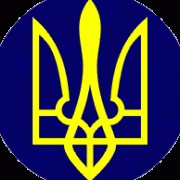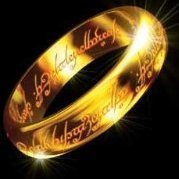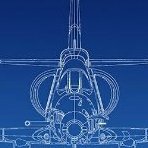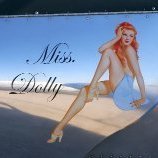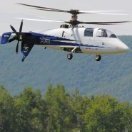Leaderboard
Popular Content
Showing content with the highest reputation on 04/19/2021 in all areas
-

1/32 Hasegawa Fw190D-13 Yellow 10
themongoose and 13 others reacted to Thunnus for a topic
Very cool! I hope you got to see a bunch of cool aircraft! Thanks Brian! Seems a bit of shame to cover almost all of the factory paint scheme with this relatively messy mottle but it's gotta be done! Thanks Troy! Thank you so much, Jeff! Thanks for the input guys! Got on a roll and was able to get the fuselage mottling done! First, I applied the masks over the fuselage markings and taped the black and white tail band. Then I applied some light green RLM 82 mottling on the fuselage. And then the darker green RLM 83 was sprayed on. The tape covering the tail band was removed and the top of the black and white band was covered with RLM 82. Here is what the model looks like after this final painting stage. A gloss coat will be applied as we moved on to the decal stage.14 points -
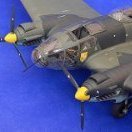
1/48th Boeing B-52H Stratofortress
Greg W and 7 others reacted to tomprobert for a topic
A little more work has been done around the nose section of the big BUFF - I am determined to get this as 'right' as possible as the nose area is so distinctive on the later models of B-52. I've done a little more remedial sanding and added in the missing panel lines. I then added the raised ribbing on the radome from Evergreen, and have also made and added the ejection hatches above the positions of the rear crew members from plastic card: Next came a coat of primer to blend it all in: I think that's about as good as I'm going to get it - passable from a few feet away! That's all for now, Tom8 points -
32nd Mirage IIID2Z (with ScaleWorx conversion set)
blackbetty and 7 others reacted to Mistral for a topic
I missed these two photos - here she is with her friend, the IIICZ : And whilst drying of the first paint coat in the lovely African sun with the cat guarding it from Hadeda poop .... Samsung cell phone camera really battling with colour saturation8 points -
32nd Mirage IIID2Z (with ScaleWorx conversion set)
blackbetty and 7 others reacted to Mistral for a topic
Then the green paint was layered in making sure that the areas where the flexible tape was lifting were continually pushed down - looks like frightful mess at this stage... And now for my most favourite part of any build - removing all those hours worth of masking in the matter of 5 minutes to unveil, hopefully, a good paint job... Half way there : And just for Alain...et voila !!! All that is missing in terms of paint are the orange and blue rudder stripes and the black anti-glare panel on the nose :8 points -
7 points
-
Now with all of the rest of the bits added. I did a light pass with light gray pastel dust to tone down the "model airplane" look of the red/black/white paint. I find this to be effective and almost foolproof (a feature which I really need). I was hoping to also work over the NMF sections with some black pastel dust, as this can really pop the "metal-ness" of the finish, as well as adding some subtle visibility to the panel lines and rivets. Unfortunately, when I started a bit of this on the underside of the wing, it was obvious that the pastel was binding preferentially to the places where some of the pieces of masking tape for the squadron colors had been. In particular, the ones that had been in place longest and/or buffed down hardest because they were defining paint edges. This effect was visible to an unacceptable degree, so I stopped with the black. I tried to remove this tape effect (which was completely invisible without the pastel) with both rubbing alcohol and Goo-Gone, to no avail. So it's my suspicion that the tape actually did something to the surface of the paint layer in terms of adding microscopic roughness, as opposed to leaving behind a layer of adhesive. It's interesting that I did not see this effect at all on my NMF Mustang. Perhaps because those parts sat for a week plus between Alclad and subsequent masking. Anyway, I've called this one done at this point. Here it is on the shelf with the Ki-27 and the Zero Overall this was a great learning experience for me - getting to put some of the learnings from the last few short-run kits to use. It has reinforced for me that with patience and some experience you can get just as good a result with these basic-level kits as from the ultra-fancy ones from Tamiya etc.7 points
-

1/32 Hasegawa Fw190D-13 Yellow 10
themongoose and 6 others reacted to Thunnus for a topic
FYI... all of the fish were released! I usually don't keep any freshwater fish for eating. Saltwater fish like tuna... that's another story. Just another lifelong passion that I happen to have. Thanks for the comment! Thanks Jim! Honestly, my time on the bench in these summer months will probably be a bit spotty but hopefully I'll get a few projects done. Good luck fishing in Goergia, Troy! Just being outside in the sunshine is a blessing in and of itself! As I mentioned before, I've kept the leftover markings masks to protect the markings as I apply the green mottle. I've placed the narrow white cross masks to the upper wings and applied the lighter RLM 82 mottle patterns. The dark green RLM 83 is then applied. I'll do a bit of touch-up work and then move on to the fuselage after masking the fuselage markings and tail band.7 points -
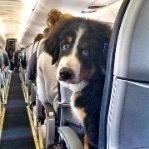
HH-60G Pavehawk Kitty Hawk 1/35 DONE!!
F`s are my favs and 6 others reacted to Pete Fleischmann for a topic
Now it’s done! cheers Pete7 points -

HH-60G Pavehawk
Aluxe and 5 others reacted to Pete Fleischmann for a topic
Hey all- Here are a few shots of the completed Pavehawk. Link to build is here: Build link to the figures is here: Figures I started the figures before I had the kit. The first post about the figures was 25 April 2019- a two year project from start to finish. Following photos were shot by Rick Ciaburri: thanks for looking! cheers Pete6 points -
This is what I managed to build from the huge box almost 2 years ago. Gotha G.I 42/15 Feodora. Not an easy build at all, especially when one faces the unusual for WNW faults in manufacture - misaligned mould halves leading to some severe sanding work - all the bits required a lot of treatment. Especially thin lines/cables/pipes... Anyway, still, when the parts are cleaned what remains is a set of quite finely fitting elements - quite a bonus when one takes into account the unorthodox form of this aircraft. All in all, I am very happy to have this weird bird in my cabinet.6 points
-

Quinta Studio 1/32 scale releases
coogrfan and 5 others reacted to Quinta Studio for a topic
Hello friends! This is our 1/32 scale interiors releases for about a month: 1/32 Me 163B 3D-Printed & coloured Interior on decal paper (for Meng kit) Article: QD32017 Available to buy: https://quinta-studio.com/en/product/279/ https://www.ebay.com/itm/164760687729 https://www.etsy.com/listing/981548389 1/32 A6M5 (Mitsubishi prod.) 3D-Printed & coloured Interior on decal paper (for Tamiya kit) Article: QD32026 Available to buy: https://quinta-studio.com/en/product/284/ https://www.ebay.com/itm/164787698021 https://www.etsy.com/listing/976801800 1/32 A6M5 (Nakajima prod.) 3D-Printed & coloured Interior on decal paper (for Tamiya kit) Article: QD32027 Available to buy: https://quinta-studio.com/en/product/285/ https://www.ebay.com/itm/164787699279 https://www.etsy.com/listing/976802524 1/32 Bf 109G-6 3D-Printed & coloured Interior on decal paper (for Revell kit) Article: QD32029 Available to buy: https://quinta-studio.com/en/product/288/ https://www.ebay.com/itm/164800279674 https://www.etsy.com/listing/995911589 1/32 Bf 109G-10 3D-Printed & coloured Interior on decal paper (for Revell kit) Article: QD32045 Available to buy on our website: https://quinta-studio.com/en/product/290/ https://www.ebay.com/itm/164810487275 https://www.etsy.com/listing/999875203 1/32 Bf 109G-10 3D-Printed & coloured Interior on decal paper (for Trumpeter kit) Article: QD32046 Available to buy on our website: https://quinta-studio.com/en/product/291/ https://www.ebay.com/itm/164810493558 https://www.etsy.com/listing/9998758176 points -
Thanks Matt, Bill and Dennis, and for the likes guy's! Just another small update... I have painted the underside of the wings with the Alclad Aluminium, but my old Iwata HP-B airbrush that I usually use just for base coats etc was too fine for the job, and I was getting a very mottled uneven effect that didnt look too good, so I had to break out my very old single action Paasche H airbrush with a No.3 needle on it to get a good even coverage, and I'm pretty happy with the result now. Looking at the pic of the Starboard Wing, there are a couple of little scratches and panel line gone astray that I will have to fix up, I can see what they mean by a NMF shows up every little flaw there is now, but all in all I'm pretty happy with it considering I had to cut panels out etc to mount the brass gun barrels properly. Not the best pics, taken with my Ipad. Thanks for looking, Cheer's, Jeff.6 points
-
ello, ello, thanks my friends for stopping by so, I have finally settled on a scheme - it's K2902 of No.1 Squadron Tangmere. It belongs to B Flight with it's fin, wheels and spinner painted in blue. It's individual letter 'A' can be seen on the cowling painted in red. Tragically, it was lost in a mid-air collision with K2901 on 17th December 1937 near Rowlands Castle, Hampshire. Both pilots, Flying Off (Acting Flight Lt) Harry Hamilton Peck (aged 26) and Sgt Robert Edmund Patten (aged 26) were killed, so this is in their memory. ..there are fancier schemes out there, and it might not be as shiny as the model, but I like the understated look and want to honour those airmen.. I am still trying to do things in some sort of order so I don't get construction clashes and am sort of looking at getting the tailfeathers & lower wings on so I can get the upper wing (just the mini midlle bit) & cabane struts properly oriented.. ..so with that, it was time to get the tail components sorted - lots of strip decal for the rib tapes & strengthening patches where there are rigging attatchments - plus these two round 'polo mint' things.. ..these were then primed with Mr surfacer & painted with alclad.. ..there are four rigging attatchments on the tailplane upper, and strut attatchments lower.. these had little leather boots added.. ..I have no idea what blue to use, so I went with the same as my Spitfire Race #80 so they look cool in my cabinet together ..the fabric effect I think works & I have wire wooled the paint to scuff it up a bit.. ..the bits don't really dry fit together very easily, but it's something like this.. ..I have to say i am really enjoying making this one - I guess that will last until I have to get the geometry right for all the struts & wings also the rigging I have no idea about - i need stiff, very thin piano wire I think and no idea how I will do the turnbuckles - I wonder if Gaspatch will scale me up a set or two TTFN Peter6 points
-
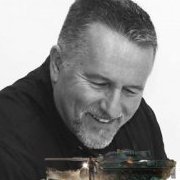
1/32 A-6 Intruder
Chris Wimmer and 4 others reacted to miketippingmodels for a topic
This is the 1/32 A-6 intruder with a lighting chip, allowing all lights to function out side and in the cockpit. Along with Reedoak figures I also used and the verlinden mule, and the Eduard mer pods ,this is all then painted with Tamiya acrylics. Its a good kit overall, it has its dowe points, but mainly a lot of up points, I have another one to build later in the year so I am already looking forward to this any way enjoy The Grumman A-6 Intruder is an American twinjet all-weather attack aircraft developed and manufactured by American aircraft company Grumman Aerospace that was operated by the U.S. Navy. It was designed in response to a 1957 requirement issued by the Bureau of Aeronautics for an all-weather attack aircraft for Navy long-range interdiction missions and with STOL capability for Marine close air support. It was to replace the piston-engined Douglas A-1 Skyraider. The requirement allowed one or two engines, either turbojet or turboprop. The winning proposal from Grumman used two Pratt & Whitney J52 turbojet engines. The Intruder was the first Navy aircraft with an integrated airframe and weapons system. Operated by a crew of two in a side-by-side seating configuration, the workload was divided between the pilot and weapons officer (bombardier/navigator (BN)). In addition to conventional munitions, it could also carry nuclear weapons, which would be delivered using toss bombing techniques. On 19 April 1960, the first prototype made its maiden flight.5 points -
Time for the HGW wet transfers, and a big thank you to the clear tutorials that have appeared here on LSP for encouraging me to try them. Way back in 2009 I still did not like decals so I tried some Hobbydecal dry transfers which worked well, though the English was not the best, but they were hard to find so I was left with using decals. So I bought two of these, one for this build and one for a future SH Tempest build This is what is in the packet. Instructions As well as the instructions, there is also a very helpful video on the internet from HGW, the instructions on the packet do say it all. So on with the show all ready to go warm water, Mr Softener, tweezers, new #11 blade, cotton buds and a toothpick.. I have read that others have used a different decal solution but I was taking no chances and used the recommended one. And it was really easy, applying them was easier than normal decals as they are a bit more tolerant to handling than ordinary decals. A tip that I did pick up from here on LSP was to turn a corner up on the film to aid removal. I did all the stencils on one wing (bottom of) and left them well alone for a day. Removing the film was easy and I was just left with the stencil, a quick wipe with a wet (water) cotton bud and any residue was gone, and they looked great. On the stencils for the Tempest there is an emergency canopy jam rescue stencil in red which I could not find on any photos of Tempests, a search revealed a post on Britmodeller started by the Typhoon and Tempest guru Chris Thomas which identifies that this is a post war stencil, so thank you Chris. That's all for now Cheers Dennis5 points
-
32nd Mirage IIID2Z (with ScaleWorx conversion set)
blackbetty and 3 others reacted to Mistral for a topic
Note also that the upper camouflage wraps around to the underside wing leading edges. First colour is the buff and per Nick's earlier comments, this has quite an orange hue - unfortunately the artificial light messes with the cell phone colour saturation.. but you get the idea : Once the buff has been left to dry for 24 hours, it's time for masking. This is the early SAAF hard edge camouflage - no feathering here - so the best tool for the job is the Tamiya 2mm wide flexible masking tape. I wish they'd bring this out in 1mm width which will make it even easier to follow those tight curves. In places, the tape is just not flexible enough and must be sliced and pushed down to prevent any of the green paint from bleeding through : Standard masking tape to fill in the centre sections and then Prestic (our version of Blutac) worms used to seal off the gaps between the flexible tape and the masking tape. This was a 2 hour job and is not a very exciting part of the build...4 points -
Greetings All, So there has been some progress. Ive managed to turn two big blocks of wood into to smaller blocks of wood and LOTS of wood dust. If this had been done by had, it would have taken till Christmas. The belt sander saved tons of time, was a bit scary at times(especially when your finger accidentally touches the moving belt) but in the end, it came down to a block of wood with 220 paper on it to refine the nose. There are a couple of spots where the basswood meets the formers that I want to clean up with a bit of filler. When i made the maint formers, they were tacked together and final shaped while still tacked to ensure uniformity. Great idea, bad executon. I couldnt get the stack apart and ended up having to band saw the the individual pieces free of each other. Some spots got little wavey and didnt form good square mating surfaces. My own fault. Maybe the small gaps wornt matter to the vacform. I have no idea, but ill use some auto glazing filler to fill any voids just to be safe. Its pretty mundane stuff but a neccessary step. Heres what it ended up being... For final shape checking, I used a contour guage. Its a bit time consuming but its and effective way to look at each side to make sure things are symetrical. Comparing side to side... Theyll get wiped down with 400 paper to take off the fuzz and then it will be off to John Wilkes, in the UK for vacforming. Until next time, be well and stay safe. Best, Geoff4 points
-
Moving House
pennausamike and 3 others reacted to mambodan72 for a topic
Hi all i thought i would update you on the move! thanks to you all for your great advice, i can proudly say that the only casualities were a couple of Pitot tubes and some loose ordnance! I know have a dedicated room with an exhaust/fume hood and two new airbrushes, I also took a wrong turn when driving the wife to work and drove past the SMS paints operation! Will save delivery costs at least Great times indeed4 points -
4 points
-

Fuji FA-200, 1/20 Nichimo
Alain Gadbois and 3 others reacted to mgbooyv8 for a topic
Thanks Mike! Work started on the fuel and oil hoses on the engine, using the information from Thor: And using this picture I took during the pre flight of the Fuji I made some flights in: This is the result so far: The nose wheel leg was also glued to the firewall. The exhaust pipes and all the other lines and hoses will be added after the engine is glued to the firewall. Cheers, Peter4 points -
Thanks Matt, and yes, just looking to finish this one up with dignity at this point. The trip we are taking in about a week and a half has me pressing to fix mechanical issues with our tow vehicle, on top of seasonal prep work to get our trailer ready for the off-road season ahead. All of this has kept me busy on all of my days off, but I did manage to sneak at least a few nights work in on the little tripe. Nearly the entire thing is completed save adding the lower aileron braces, landing gear rigging, prop and aileron control lines as well as final assembly. I figure about 1 more good nights session and it should be finished. I was trying to get the little tripe finished up while enjoying some British telly with the wife but my 19 lber and my 26lber decided to pull a Ying & Yang right where I was trying to build on the coffee table, so had to pack up and head back to the main bench (nothing but terrestrial radio down there atm) After heading back to the bench, I got the rudder added as well as the OOB machine guns that I had built previously. After annealing, and painting, these really didnt turn out too bad. The lower wing spare and lower panel were attached and all the weathering that Im going to do to the model is now done. I would have to have supposed that Voss's machine lived a fairly short life and wouldnt have had anything too severe, so I didnt want to go overboard. Besides, heavy weathering or damage didnt match any photos I have of Voss's kite. Anywho on with the pics: Engine complete and ready to be attached to that tiny fuselage: (crappily aligned pic sorry bout that) Engine is setting in place atm: Painting, let alone weathering prior to assembly is super foreign to me, and WWI stuff is always an exercise to some degree, out of my comfort zone. I really do like the look of the shiny oil and leak weathering over the flat fabric. The contrast always to me gives more realism My cell camera is old now, and starting to do funny things. I guess the angels approve of the fit of the top wing as much as I do.....just looks like some odd "heavenly" type light treatment. That could also be used to describe the actual fit of the entire kit honestly. People are going to have to give me some definitive proof that this isn't WnW engineering with fit like this. All 3 wings fit basically perfectly in place, and perfectly in relation to each other. The top wing is just set on yet still fits and aligns perfectly with the fuselage and the other two wings: Even with all the silvering (which is much less evident with the whole model together, as it really takes attention to the overall look) I must admit that it still turned out to be a very attractive, if all be it not super well done model. This is the last installment prior to finishing this little guy up. It was fun! Id HIGHLY recommend this kit to anyone who wants a tripe, and is willing to put in about 20 min worth of hot water correcting. Thanks lads, and will hopefully have this one finished off long before we leave on our trip on the 29th of this month. Cheers!4 points
-
1/32 AV-8B Harrier, Trumpeter
Loach Driver and 2 others reacted to Jarda_Hajecek for a topic
Scale: 1/32 Kit: Trumpeter Aircraft: AV-8B Harrier Unit: USMC VMA 311 Tomcats Aftermarket: Aerobonus Pilot with Seat Paint: Ammo by MiG Jinenez, Vallejo, Tamiya Weathering: Flory Models Washes, Oilbrusher Ammo, Panel Line Wash Ammo I am pleased to present you latest finished model. It is the Trumpeter rendering of the Harrier. No alterations made, straight OOB with only the addition of an Aerobonus (Aires) pilot with seat as the kit seat really did not look proper. I am doubting the helmet used on the figure fits the era, (I would prefer the pilot to have an HGU-55) but I left it as is mainly as I had no spare head sitting around. The kit itself was actually built by a friend of mine and it was for me to do the finishing and final painting and weathering so my friend did all the heavy lifting of the build so I cannot comment on how the kit falls together. I am aware that the kit has obvious shape issues and inaccuracies however the model does resemble a Harrier for me. Tried some new things in terms of weathering for me. In the end I am happy with results. Happy modeling everyone and stay safe!3 points -
Good Morning all. I would like to introduce myself. I tried once before on these forms, but the project stalled indefinitely, and I'm not much for posting WIP threads. I have been following along builds here for many years, and I think LSP is my favorite modeling forum by far. You folks are some of the kindest and most talented modelers out there. A little about me, I grew up in my dads local hobby store and have been building for most of my life. I have always done 1/48 scale models, and felt it was time to jump into something a little bigger. I bought this kit when it fist came out and started assy, but frankly I got intimidated by it and it sat on the SOD for years. I decided this year to finish up any SOD kits and this was the last one. So here it is. Now that summer is coming quickly my building will slow considerably, but I'm thinking for the fall/winter season a trumpeter avenger in the FAA livery would be a very nice compliment to this kit. All in all, I found it to be a bit of a difficult build. However, it put me out of my comfort level in a wonderful way and am quite pleased with the result. I chose the FAA scheme simply because I haven't seen it done anywhere on this kit before. I used mostly vallejo air and tamiya colors. The build is strictly out of the box. Hope you all enjoy it. Thanks for looking. PS, please excuse my photos. I'm far from a pro photographer.3 points
-
Just watched rover Perseverance land on Mars
Landrotten Highlander and 2 others reacted to Dave Williams for a topic
Done3 points -
Hello again, Just a quickie. Fixed up the deficiencies I noted in my last update and I call it ready for the vacform. Maybe better to say its as good as I can get it. The wing will get sorted out next while the fuselage gets done. I need to work on picture quality...altho, there is a piece of drafting mylar over the drawing to protect it. It also allows me to work on the drawing without actually marking the drawing. Thats it for now boys and girls. Stay safe Geoff3 points
-

1:32nd scale Hansa-Brandenburg W.20
olgerd83 and 2 others reacted to sandbagger for a topic
Hi all, The lower wing was not fitted directly to the top of the fuselage but was located on four mountings and just clear of the fuselage. The front a rear wing spars of the lower wing passed across the fuselage through these mountings. The kit instructions show the mountings, but they are not supplied in the kit. Therefore representations of the mountings need to be created. The mountings were made from brackets in the ‘Jadar’ WW1 1:48th scale control horns (S48087) photo-etch set and 0.5 mm diameter Brass rod. I also used 0.5 mm rod to make the grab handles for the rear of the fuselage, which again are not supplied in the kit, Mike3 points -
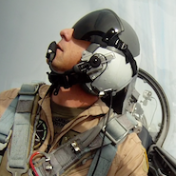
MH-6M Little Bird
easixpedro and 2 others reacted to Timmy! for a topic
Correct me if I'm wrong but doesn't the AT-38B have tandem seating? Also the nose is slightly more pointed. Timmy!3 points -

Zvezda Star Destroyer - a new detailing project
themongoose and 2 others reacted to The Madhatter for a topic
thanks Neo - I must admit, I am also looking forward to the end So, I finally got round to finishing off the spot lights up front and thought I'd do a dry fit /light test, and thought I would share my happy results Yes, I probably should have gone with cool white, but I prefer the look of the warmer white. Well, that's it but feel free to share your thoughts - good or bad. As always, thanks for looking Si3 points -
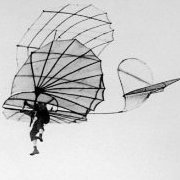
Gordon Bennett! RNAS 1214
themongoose and 2 others reacted to RLWP for a topic
These are the excellent Gaspatch Palmer Cord wheels: Now for something a bit ambitious. I've owned a watchmakers lathe for some time, and I'm reasonably competent with it, so inspired by @kensar's work on his AVRO I thought I'd have a go at making barrels for the engine: They will use left-over rockers from the WNW Gnome Lambda sprue and fit into a very simplified crankcase. Most of the engine is pretty hard to see on a Tabloid Richard3 points -
A major milestone on this little model has been passed tonight, with the help of Eduards 1/48 F-4 Phantom II mask set (EX 004), designed for Hasegawa F-4 kits. Here are the up to date pics, warts and all. I just could not properly establish the canopy framing on the forward windscreen, using only thin strips of Tamiya tape. The mask set gave me what I needed in order to get symmetry and consistent gaps around the center oval part of the windscreen. Then, the rest of the frames were laid out with .5mm strips. Once the canopy was masked up, I sprayed Tamiya XF-1 Flat Black, followed by AK Real Color Light Sky Blue (FS 35526). Of course, some touch ups have to be done when the paint hardens off, in order to sharpen up the broken edges on the frames but the most difficult part of the job is behind me now. Without the mask set, I would have never been able to get the result I did. Thank you Eduard!3 points
-
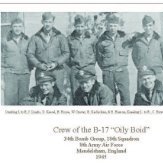
Atlantis Models / Convair Space Shuttle
Anthony in NZ and 2 others reacted to patricksparks for a topic
Finished up the little project today, it was really an enjoyable project,simple, fun, short turn around, something completely different !!!!3 points -
Italeri Starfighter. Luftwaffe Norm 72 scheme.
scvrobeson and 2 others reacted to dmthamade for a topic
It's been really busy at work, even with the stay at home orders and non essential closures. Have had very little time or energy for models, just enough energy to lurk a bit. Saturday morning, started in on the paint, and by tonight, sunday, i had all the paint down on the build. I stayed with the Norm 72 scheme, want to see it through to completion. The last time it looked like this was just over 2 months ago. All paints again worked great, really like the AK Real Colors and the Tamiya Lacquer Paints. Hope to clear coat it Wednesday, then decals Saturday. I was going to strip the tanks, but they look workable and i'm almost out of paint. This paint is pretty tough, but stripped easily with Mr. Color Leveling Thinner. No hard scrubbing or scraping, soaked a paper towel and wiped away. Don3 points -
3 points
-
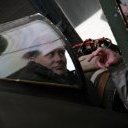
Tamiya Sturmgeschutze IIIG with Ostketten
Gazzas and 2 others reacted to Panzerwomble for a topic
Marder III - sort of ...... This was just as it was nearing completion - all pix by me . John's Marder Page on FB Johns Stug III D page on FB3 points -
Thanks guys! The edges of the control surfaces were sawn-in to make them visually separATE. Now Meindert mentioned it, I couldn't let it pass. There was a minor misalignment of the edges at the unnderside of the ailerons. The recessed lines were easily filled with Mr. Surfacer. Then a bit of shading was executed on the white area's with light grey, followed by a second coat of white: Faded Intermediate Blue will be sprayed next. To be continued. Cheers, Peter3 points
-

MH-6M Little Bird
Marcel111 and 2 others reacted to Pete Fleischmann for a topic
Hey all, test fitting here... The Black Ops bulkhead, seats, and instrument console look like they’ll work with some adjustments. I was also concerned that the pilots outboard feet might interfere with the windscreen, but I think I’m ok. I’m trying to identify any fit issues now and address them before I start doing any detail work. I wasn’t sure if the instrument console would interfere with the windscreen- looks like I’m good there too. you can see the Blu Tak holding the instrument console in place. The base of that is a little short- it should come all the way back to the seat bulkhead-I’ll address that too- pressing on- the pilots feet are separate parts. I may turn their outboard feet in just a smidge to be sure- cheers Pete3 points -
It's been a while hasn't it! Fishing season kicked off for me with a mid-week hooky session at my favorite lake. So much fun! I ended up with 61 largemouth bass topped by a 5.75 pound kicker... With the fishing stuff at the forefront, the modeling stuff kept percolating in the back of my mind. I finally pushed myself to sit at the model bench and get started on some spraying. The D-13 is sitting in a post-factory state and the task before me now is to put on the field-applied mottle of dark greens, which I've chosen to be RLM 82 and 83. I thought a good way to re-introduce myself back into the game was to try my hand at applying these greens onto the horizontal stabilizers, which are still removable. Here are the stabilizers, with a base coat of RLM 74 and 75. Using the color profiles found in Crandall's Dora Volume 2 as a rough guide, I sprayed some random patches of the lighter RLM 82 (Mr Hobby Aqueous). After that, the darker RLM 83 green was sprayed on. I gave the stabs a light coat of clear gloss (Alclad Aqua Gloss) to even out the paint job for the photos. Not much but it is a start, right? I'm going to use the leftover masks to cover the markings that I've already sprayed to protect them from inadvertent overspray. I think I'll be tackling the wings next since the painting should be very similar to the stabilizers.3 points
-
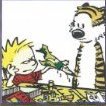
EA-6B Prowler (02 April: Done!)
Greg W and 2 others reacted to easixpedro for a topic
Continuing to faff about in the cockpit. This is attempt eleventeen thousands...we're at about a 75% solution. Or TLAR...that looks about right. Used the throttle quadrant from the kit, but flipped it so the throttles will be in the right position. Seats are in their approximate positions...ECMO1's seat is a couple inches lower and further aft. The circuit breaker panel is just resting there till I get the breakers on there (approximately 44 of em) Here's how it'll look under the canopies. This is one of my failed pulls, so have used it to mark up the approximate canopy frames. Goal of that wonky looking section that looks half built is to give the impression of the lining (and for something to attach the front cockpit bits to). Wont be visible from the back and the amount of junk up front should limit viewing...that's the theory anyway! -Peter3 points -
Mirage F-1
D.B. Andrus and 2 others reacted to Finn for a topic
There is always room for a sharkmouth: Jari3 points -
"Sugar's Blues" Late War RCAF Lancaster
monthebiff and 2 others reacted to mrp for a topic
Glad to be a help, I do have a large number of photos in my collection of Canadian Lancasters, including a number of "Sugar's Blues". Most of these photos are going to be used in a forthcoming book project on Canadian wartime Lancasters, so I would prefer not to toss them out into the wind of the web quite yet! Send me a e-mail address via PM , and I am more than happy to share that way.3 points -
Some more progress last evening....milestone. I got the firewall in the vehicle. First shot....I've added the lubrication lines running to the front of the vehicle. This shot is from the radio operator's side. I used 0.020-inch styrene rod for these which may turn out to be a mistake when I attempt to put bends in them to connect them to the lubrication ports mid-tank above the floor. This is how they currently sit at the point where they come up through the floor and connect to the lubrication points. This is going to be a FUN job (sarchastic). Same set of lines on the driver's side of the vehicle...fewer swing arms on this side (forward of the turret) means fewer lines.... Firewall installed (FINALLY), with the right, rear shock installed. The white dust specs are actually plastic shavings from having to use super glue to get the firewall to sit tight against the panniers. Trumpeter is known for having "sagging" panniers and this model is no exception. You can see my cleanup of superglue through the the lubrication lines right in front of the firewall. That's what created all the plastic dust. Ugh..what a pita. Below is a shot of the left side idler wheel adjustment screw. It's pretty nicely done (by Trumpeter but for a nasty seam that runs right through the screw threads) but probably won't be seen once the plates are installed above the fuel tanks. But I'll know it's there. Since most of the engine bay on either side of the engine will be covered by plates, I saved myself some aggravation and omitted the lubrication lines aft of the firewall. The engine compartment where the engine will fit (I hope). I've still got a little work to do here (not including touchup painting) to replicate the throttle linkages that run up the rear side of the firewall and then out to the engine. All-in-all, not bad and the Panther G specific air duct tubing really sets this engine bay off.... Too bad it'll be mostly covered up when the Engine is installed...how much remains to be seen. The back side of the firewall. You can see that the superglue I needed to use to get the panniers to meet the plate has fogged. That's not a huge issue and will be corrected with a layer of red-brown primer...good as gold (well, almost). The box between the firewall and the engine wall is one of the fuel tanks. Again, this won't be seen after the plates (note the lip around the periphery of the area where the fuel tank sits. You can also see the nice seam running through the idler adjusting screw...and that's after having been cleaned up as much as I dare (without losing all the detail on it). The engine bay aft end with the rear armor plate temporarily installed. You can see my measurements at the bottom of the plate on the r/h side. Since the hull sides aren't completely vertical, I had to file off some material from the rear plate sides so that it would fit snugly. Had I not done that, the rear plate would not have fit or it would've popped the superglue seam at the firewall. I had to take 0.040-inches of material off the upper sides of the mating surfaces and tapering down to .010-inches off the bottom end to get it to fit. Those knockout pins are SOB's as they're larger than my largest punch and filling them in requires a lot of effort. Milling them down is not an option though so I'm left with only one choice...fill, sand, prime, fill, sand, prime.... The outside of the rear plate noting the unrealisticly uniform (in my opinion) weld beads that exist on either side of the plate. These will be removed and replaced with magic-sculpt with more "haphazard" weld bead. Trumpeter gives you the entire idler adjusting mechanism so should you choose, you can leave the covers open and show off the detail. I have not decided whether to do this or not. I started assembling the roadwheels. These aren't actually that bad. There is some cleanup involved (as one would expect) but they assemble very easily. There are a LOT of them! That sentiment is only tempered by the fact that there are more track links than anything else and I've got that in the "still-to-do" column. Ugh.... I haven't glued the dual wheels together yet, preferring to keep them that way to ease painting between them. (a lesson learned from making that mistake on several Panther, Tiger I and II models in the past). An overall shot of MOST of the roadwheels with the two larger idler wheels I stole from my early Panther kit. The roadhweels are approximately 2.5" (~64 mm) in diameter. These are the largest roadwheels I've ever assembled! Last for today is the edges of the roadwheels. You can see where the sprue gates attached to each wheel (4 places on each wheel). Some played nice and snipped off flush, most did not and required Mr. Surfacer 500 to fill the holes left by the sprue gates. That was a chore... Hope you're enjoying my trip through this gigantic tank build. I certainly am but not looking forward to another one for some time.3 points
-
1/16 Australian M113A1 & AS4
Model_Monkey and one other reacted to GMK for a topic
Not quite done on my big Bushmaster, but close enough to start looking at the next project/s: in this case Australian Army M113A1 APC & its upgraded form, the M113AS4. This is “my” vehicle from 1999: and here it is post upgrade, stretched & with a German engine & transmission. And here is the design thus far, the AS4 dual-pin T-150F track. Sadly, this has zero commonality with the dual-pin Diehl 513B fitted in Timor. To help things along, AFV Club has announced a Vietnam-era version:2 points -

Just watched rover Perseverance land on Mars
Landrotten Highlander and one other reacted to patricksparks for a topic
First test flight today....2 points -

Mitsubishi A5M4 "Claude" [1:32 Special Hobby] - RFI
Troy Molitor and one other reacted to mywifehatesmodels for a topic
Very, VERY NICE! I love the Claude and this is my new favorite build of one! John2 points -

HPH Catalina
Phartycr0c and one other reacted to MikeMaben for a topic
Nothing wrong with being picky but try not to limit yourself to absolute accuracy unless you're building to compete. I like Ron's example , even if it's a sim scheme. I usually just keep looking until something strikes me as cool. It's all about coolness factor to me. But at any rate have fun with it .2 points -
Hi there, 1951-vintage MiGs used a grey-blue, which varied among the manufacturers. There was one which apparently painted the cockpit green, but I've not ever seen it. Were I to use MRP paints, I'd probably choose MRP-018, AMT-7 Grey Blue, or MRP-49, Light Grey Blue. Regarding the engine, the Klimov VK-1, there are color photos available if you search.2 points
-

HH-60G Pavehawk
Dope737 and one other reacted to Pete Fleischmann for a topic
Thanks all for the nice comments-really appreciate it! here’s a belly shot- cheers Pete2 points -
2 points
-
"Sugar's Blues" Late War RCAF Lancaster
monthebiff and one other reacted to mrp for a topic
The Picture of the Lancaster nose in the bone yard with the children , isn't "Sugar's Blues". Its a 420 Squadron aircraft. I have a couple of similar colour photos of this particular aircraft. A number of 420 Squadron (Snowy Owl) painted the names of the crews , in this large style. The names were added by the Squadrons , prior to the return flight to Canada. Some aircraft even had a nice set of whitewall painted main tires. 428 Squadron painted the nose sections , rear of front turret forward with a gloss black paint. This tends to be seen mainly on 428 Squadron aircraft .The Canadian built Lancasters were painted with a better quality paint than most of the UK built ones. The paint tended to not weather as much as the UK built ones. Some of the returning Canadian Lancasters had some paint loss on the forward nose section. Canadian Lancasters sub-assemblies were also painted prior to all the sections being put together. Sometimes the camouflage pattern on the top wing, doesn't quite match where the sections meet. Weathering is a divisive subject to the modeller, and it is always a personnel preference as to how far you want to go. The aircraft were mainly left outside, in all weathers. The fuel tanks filling points across the top wing, would be well worn . Lancaster engine exhaust staining and patterning is a stand alone subject, not to mention fluid leaks and general dirt. Mark2 points -

HH-60G Pavehawk Kitty Hawk 1/35 DONE!!
JeepsGunsTanks and one other reacted to LSP_Kevin for a topic
Good news! Pete and I will be collaborating on producing an eBook of his build for KLP Publishing. It won't be super soon, as I have a number of projects ahead of it in the queue, but we've already got the cover nailed, so the rest should be easy! Stay tuned to the KLP website or Facebook page (and here on LSP) for more news as it happens. Kev2 points

